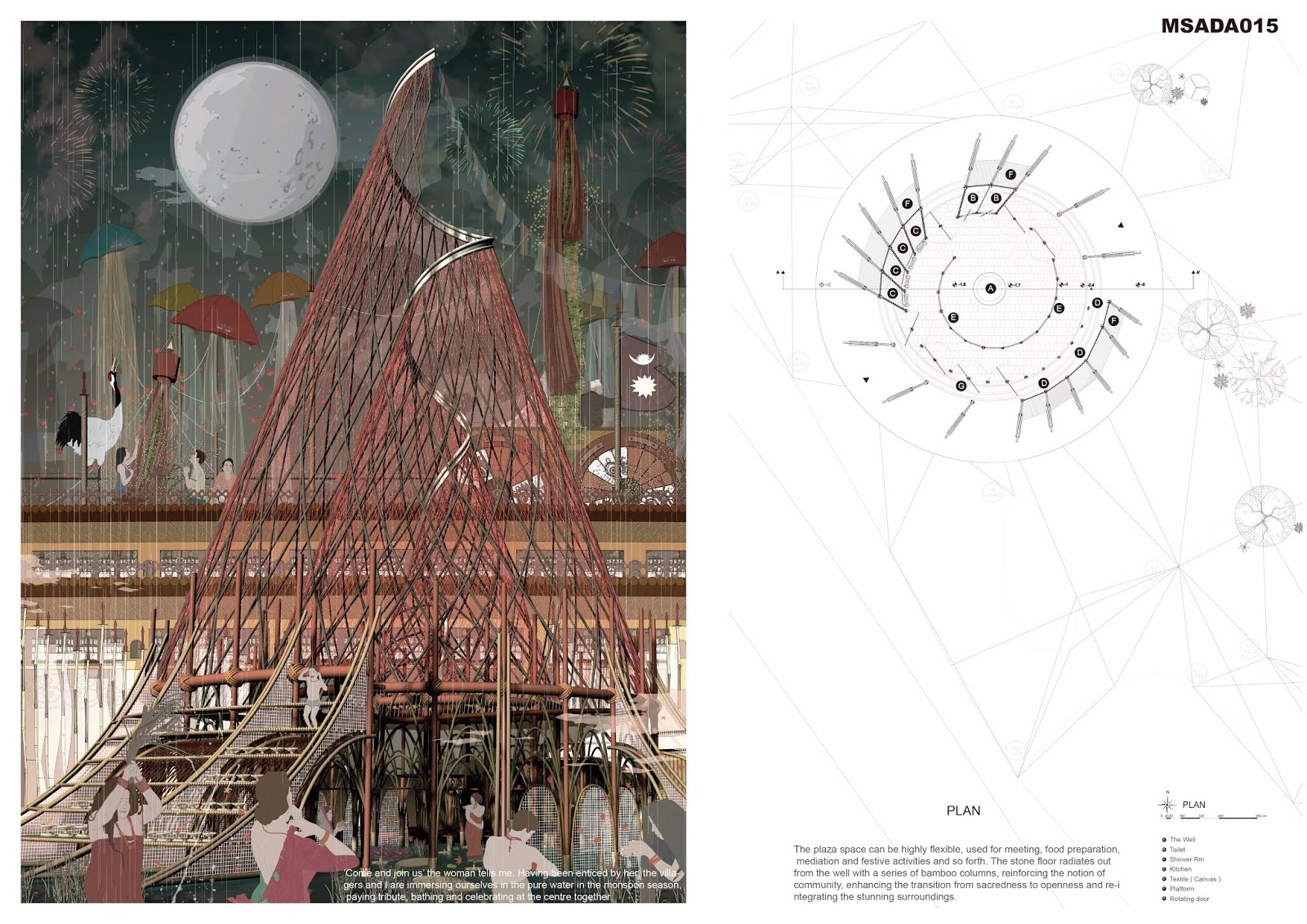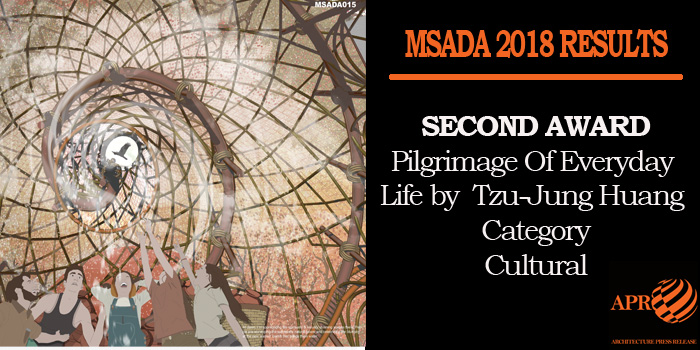Media Student Architecture & Design Award 2018
Second Award | Category: Cultural
Architect: Tzu-Jung Huang
Team Members: Chai-Wei Chang, Mu-Hwai liou
Country: Taiwan
Pilgrimage Of Everyday Life
The project mainly tackles water-related issues and explores the ideal prototype of an egalitarian community centre which serves for all people. By introducing the fog catcher technique, it proposes to create a multifunctional gathering place for casual interaction, knowledge sharing, rites and so on.

Situated in the absolutely picturesque landscape, the site is also enriched by the diversity of cultures and religions, endowed with supremely natural power. However, the topography, the growing population, and the lack of infrastructure result in water scarcity that needs to be addressed through architectural intervention. Water has been seen as a sacred component in Nepal in terms of religious activities and everyday life. Thus, the proposal focuses on transforming conventional community centre into “pilgrimage of everyday life”. The centre draws on locally sourced, sustainable materials but seeks to use them in innovative ways, thereby allowing the villagers to preserve their traditions and harvesting water with a sense of proud and dignity. Taking inspiration of Nepalese daily outfit, Doko, the bamboo structures are interwoven with meshes to a religiously and locally significant typology, representing and encouraging the villagers to be engaged with the construction of this iconic centre- one they can appreciate and take pride in.

Formed from waxed linen held in bamboo structures above ground floor, the fog catchers allow humid air to pass through then condense it into droplets which are transported down the funnel and then the well. Furthermore, the system is capable of generating over 1300 litres of water per day, tremendously ameliorating the inefficiency of water collection, as well as creating ever-changing landscape formed by the glistening, translucent waxed linen. Also, the spiral structure amplifies the abundance of religious and natural power in this area, providing a place beneath it for people to worship the blue sky and celebrate the harvest of water. The plaza space can be highly flexible, used for meeting, food preparation, mediation and festive activities and so forth. The stone floor radiates out from the well with a series of bamboo columns, reinforcing the notion of community, enhancing the transition from sacredness to openness and re-integrating the stunning surroundings. The façade and exterior platforms are adorned and draped with the locals’ goods and food aroma. Thus, going to the community centre becomes a delightful and spiritual journey which one can experience personal and social transformation and celebrate the importance of local traditions, communal gatherings and Mother Earth.


